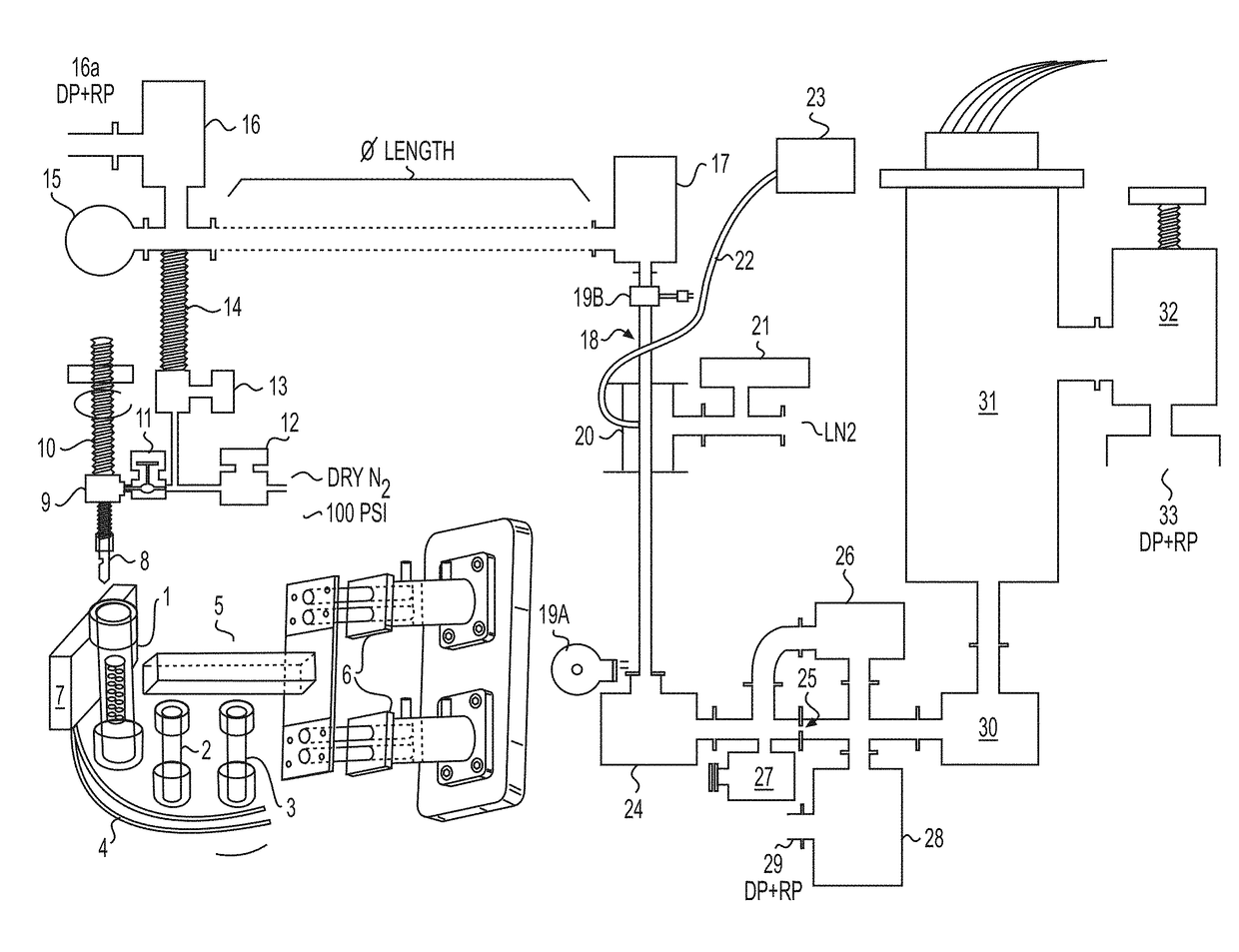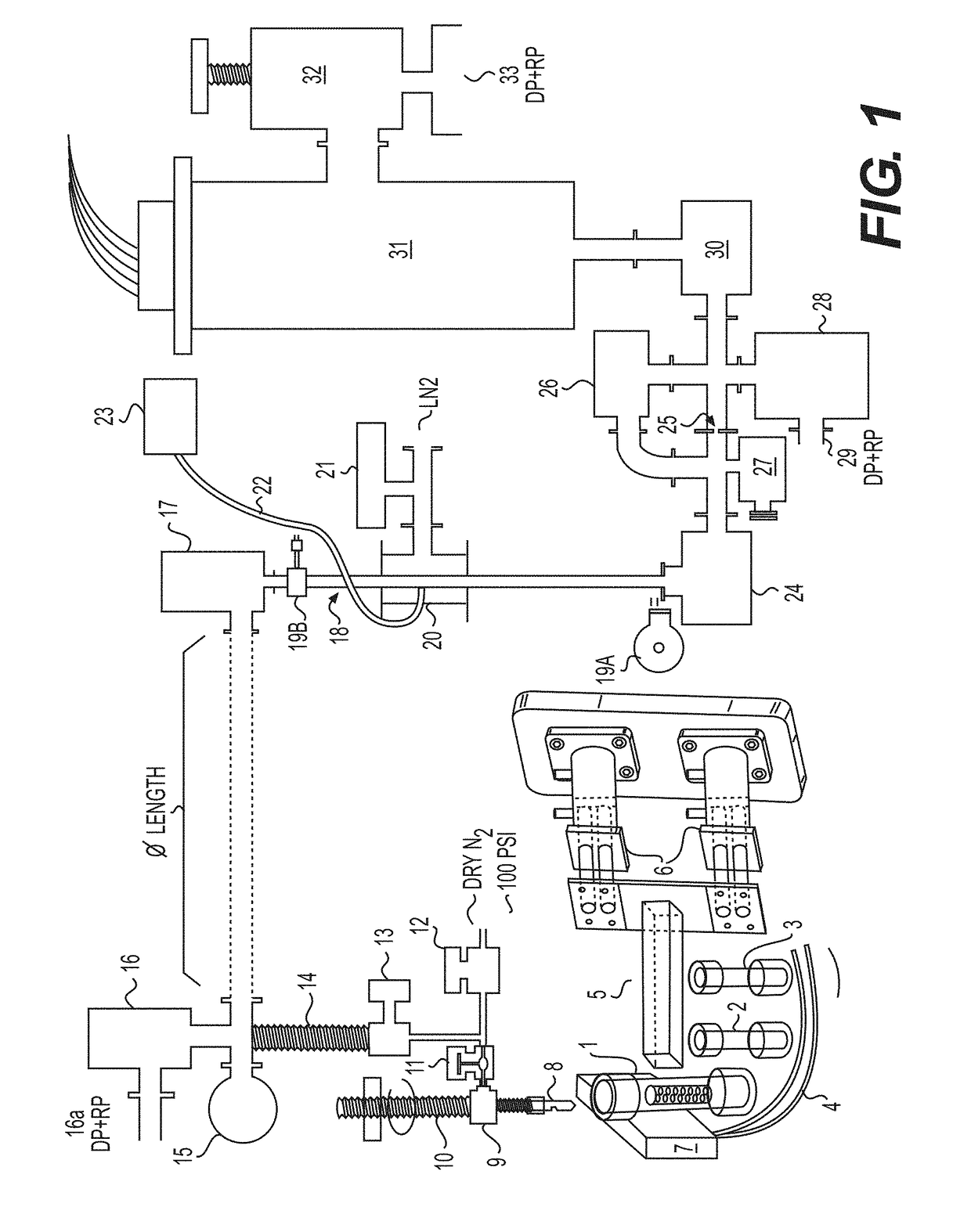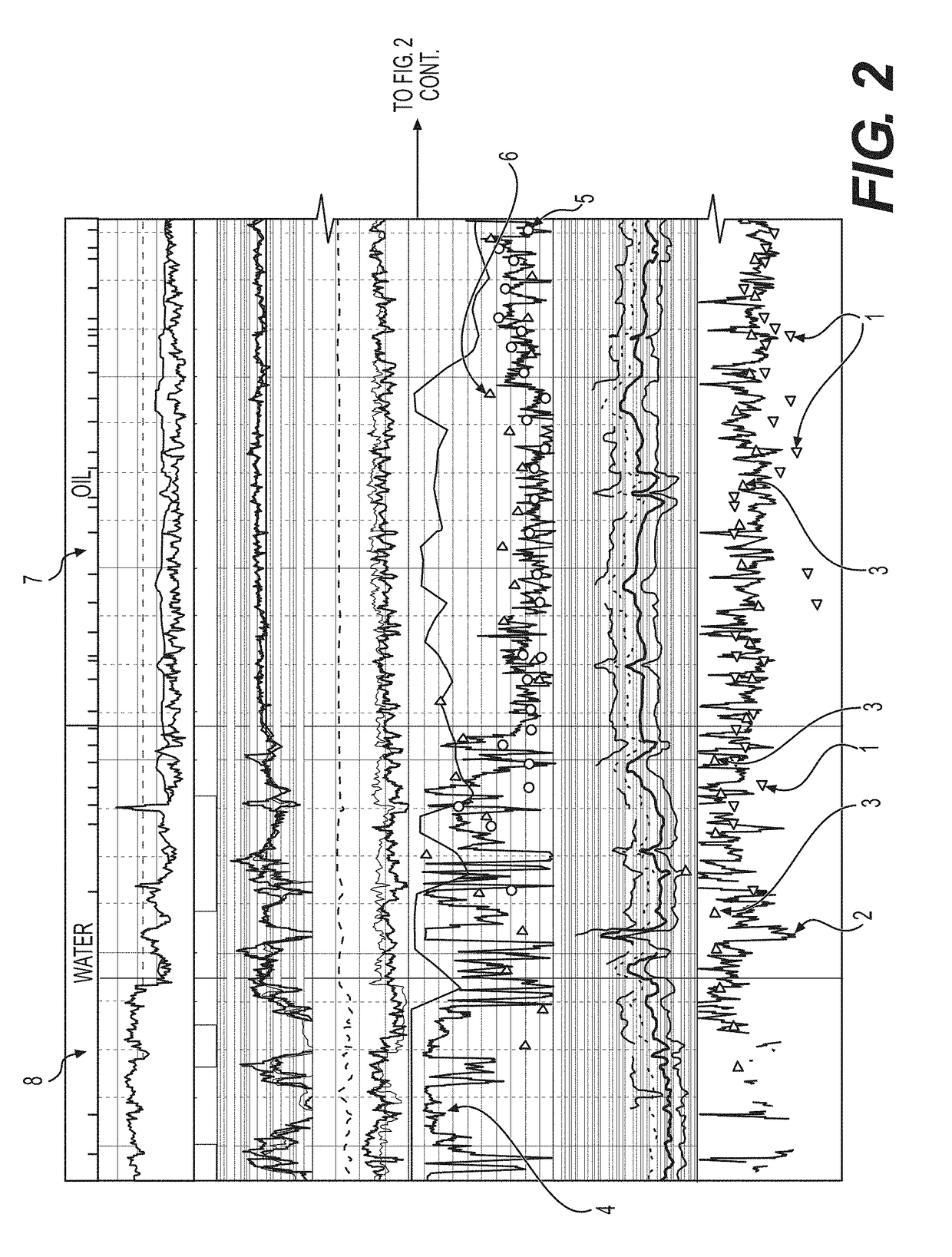Methods and devices for evaluating the contents of materials
a technology of materials and contents, applied in the direction of fluid-tightness measurement, instruments, borehole/well accessories, etc., can solve the problems of limited resistivity, difficult and easy detection of petroleum and natural gas deposits
- Summary
- Abstract
- Description
- Claims
- Application Information
AI Technical Summary
Benefits of technology
Problems solved by technology
Method used
Image
Examples
example 1
[0196]This example provides a description of an exemplary device / system according to certain aspects of the invention and that also is suitable for application of several of the inventive methods described herein. An overview of the exemplary device is provided in the following figure (FIG. 1).
[0197]With respect to the device / system shown above, #1 depicts a first sample container, as described elsewhere herein. The first sample container #1 contains the sample of the material, such as cuttings taken from an oil well. The sample container #1 in the case of the depicted system is sealed and made of an impermeable material. The top portion of any sample container used in the system, such as the first sample container #1, is penetrable by the needle #2, which provides a passageway and means for transferring gasses released from the sample into the rest of the system, either immediately after penetration and / or after generation through the application of one or more forces acting upon t...
example 2
[0208]This example demonstrates the use of methods of the invention to determine oil and water saturation in a formation based on analysis of cuttings taken from an oil well, as well as permeability analysis obtained by analyzing a series of cuttings taken from the well.
[0209]Thirty samples of non-sealed cuttings taken from different depths in an oil well that had been stored in unsealed containers for a period of approximately three months under warehouse conditions in the summer (about 100-130 degrees F. estimated maximum daily temperature) were subjected to analysis using a device as described in Example 1 to provide information concerning the permeability of samples taken from different depths in the oil well, based on the release of target substances. The cuttings were subject to two runs of the system, forming two aliquots, based on the application of pressure conditions of 50 millibars and 5 millibars, respectively.
[0210]The right-hand column of FIG. 2, shown below, depicts a...
example 3
[0215]This example demonstrates the identification of an oil pay zone, through application of the inventive method on oil well cuttings, which were taken from a section of an oil well that was not being prospected based on application of pre-existing analytical methods.
[0216]Five hundred and eighteen cuttings taken from an oil well site, sealed at the well, were used in this analysis. Three aliquots were obtained from each cutting, using pressure conditions similar to those described in Example 2, plus an aliquot following intense sample dehydration. Permeability measures were obtained by the difference between aliquots 2 and aliquot 1 for each cuttings sample, #1. The data from the analysis were plotted and the actual plot of this data is shown in FIG. 3.
[0217]Numerous additional data points were also obtained and are reflected in FIG. 3, such as formic acid #2, acetic acid #3, oil saturated water #4, presence of C5-C10 paraffins #5, C6-C10 naphthenes #6, C6-C8 aromatics #7, and to...
PUM
| Property | Measurement | Unit |
|---|---|---|
| pressure | aaaaa | aaaaa |
| pressure | aaaaa | aaaaa |
| pressure | aaaaa | aaaaa |
Abstract
Description
Claims
Application Information
 Login to View More
Login to View More - R&D
- Intellectual Property
- Life Sciences
- Materials
- Tech Scout
- Unparalleled Data Quality
- Higher Quality Content
- 60% Fewer Hallucinations
Browse by: Latest US Patents, China's latest patents, Technical Efficacy Thesaurus, Application Domain, Technology Topic, Popular Technical Reports.
© 2025 PatSnap. All rights reserved.Legal|Privacy policy|Modern Slavery Act Transparency Statement|Sitemap|About US| Contact US: help@patsnap.com



